REDIFFUSION (SOUTH EAST) LIMITED
4 / 5 and 6, Orange Street
Canterbury, KENT CT1 2QH Tel. 66444/5/6
Associated Companies in over 175 towns in Great Britain and in Barbados, Bermuda. Canada, Ceylon, Guyana,
Hong Kong, Jamaica, Malaya, Malta, Singapore, South Africa, Trinidad and West Africa etc.
© rediffusion.info 2010
A look back at the foundation of the South East Region based around activities in the early - 1970's.
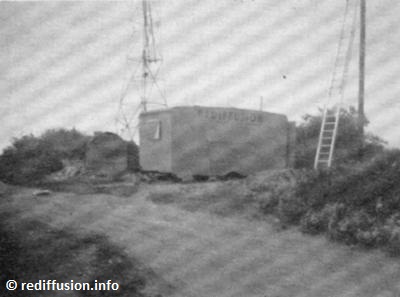 |
The caravan contained all the head-end equipment for initiating the service in Hastings in 1953 |
|
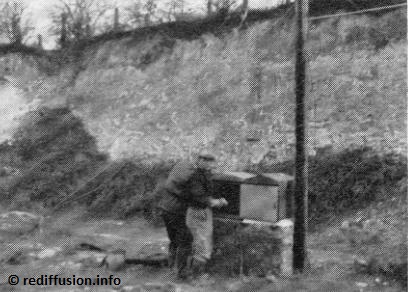 |
This kiosk was the first television receiving site for Thanet situated in a disused railway cutting. |
|
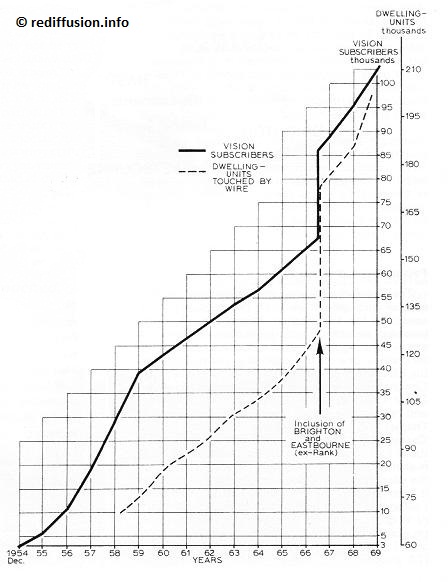 |
Growth of subscribers 1954 - 1970. |
|
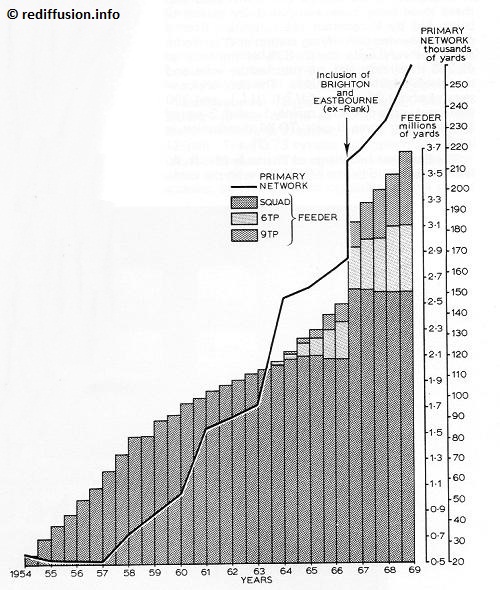 |
Growth of the network 1954 - 1970. |
|
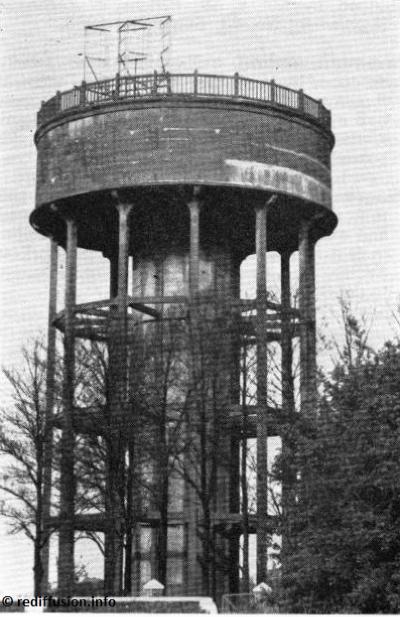 |
Aerial Site at Rumfields Thanet. |
|
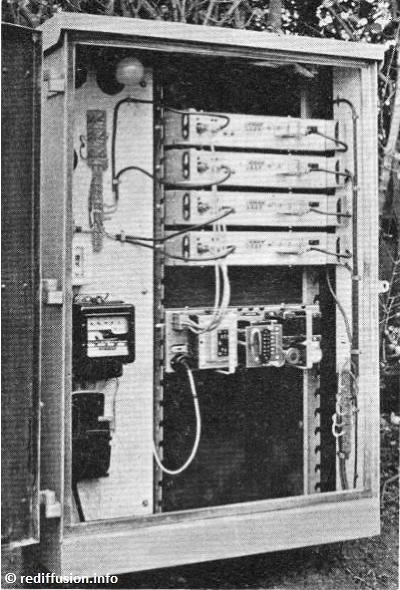 |
A Feeder Repeater Kiosk. |
|
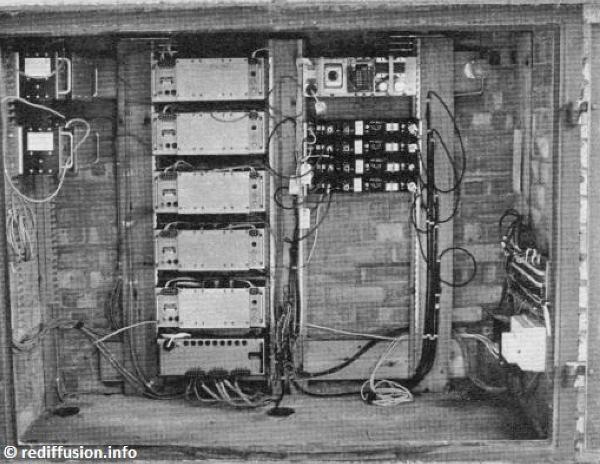 |
Distribution Kiosk with A.623 transistor audio amplifiers. |
|
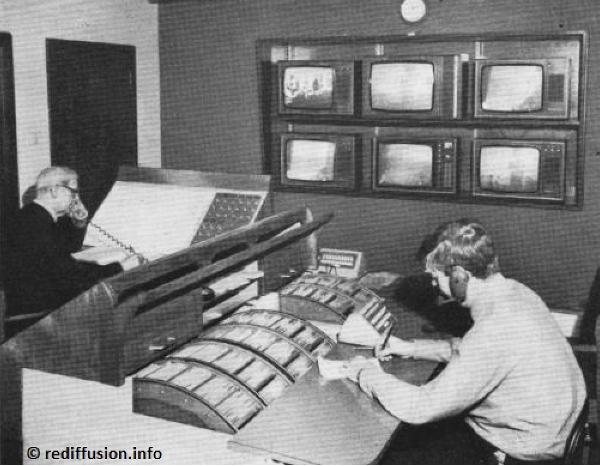 |
Westwood control room 1970. |
|
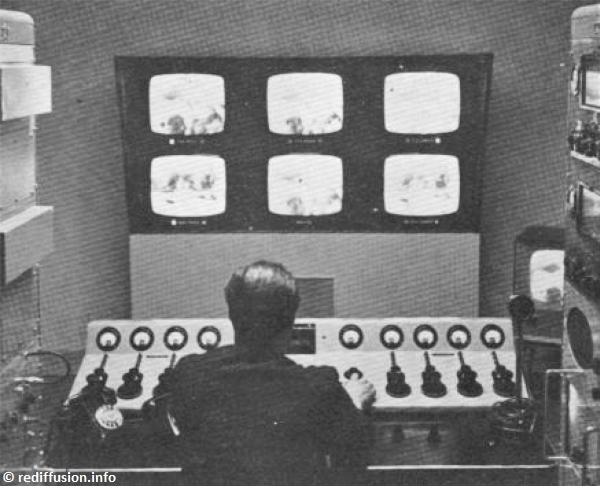 |
Earlier monitor and control desk at Westwood. |
|
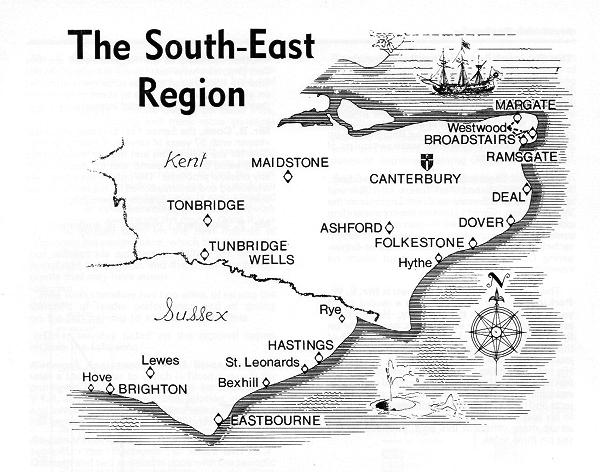 |
South East Regional Map. |
|
Background
Claims to be the oldest of the Rediffusion operating companies were sometimes the grounds of contention but there was no doubt at all that the South-East Region included amongst its constituent branches two of the earliest towns to be granted relay licences, namely; Ramsgate (1928) and Thanet (1929), the latter in the name of Mr. F. H. Austen, who was to become General Manager of the Region.
In 1945 at the time of early regional groupings, Thanet and Maidstone were two operating tovvns of the Southern Region, which stretched from the Straits of Dover to the Bristol Channel. The technical atmosphere of that time could have been sensed from remarks made to a celebration dinner in October 1945 by Mr. R. P. Gabriel in which he said that "the impending conversion of Ramsgate to a three programme service would entail the use in cables of a material called 'polythene'. which had played a large part in the wartime development of radar". and that "another innovation envisaged was the combined switch and volume-control replacing the separated apparatus which sometimes caused inconvenience to subscribers". He also mentioned that the Company was exploring the possibilities of relaying television.
The first experiments with wired vision were duly initiated in Thanet in 1950 and since that time there had been a steady growth of the vision network and subscribers followed by new operations in towns of Kent and Sussex as indicated on the map of the area which became a Region in its own right, with headquarters at Canterbury. In the late 1960's the services in Eastbourne and Brighton were taken over from the Rank Organisation. The development of the network and the growth of subscribers between the years of 1954 - 1970 are illustrated in the
accompanying charts.
When operational advantages and disadvantages were considered, the South-East Region enjoyed a relatively comfortable position. It was
a reasonably compact area and the distances between branches were not as great as are encountered in some regions; on the other hand it lacked any densely populated. industrial towns of the kind which particularly lent themselves to a wired distribution system.
Engineering
The Chief Engineer for the Region was Mr. B. van Ryn, C.Eng. MIEE, MIERE who joined Rediffusion in 1947 and after a spell of 12 years as Chief Engineer in the Wales Region, moved to take up the corresponding position in the South-East Region in 1960. He became an "Elder Statesman" in the Rediffusion technical sense, an authoritative voice at Engineering Conferences and one without whom no committee was complete. The Assistant to the Chief Engineer was Mr. E. W. Parkins, another "veteran" with a record of 33 years of service with the company. He had been responsible for many innovations, particularly on the network side, and had described several of them in the technical
journals. His responsibilities included the supervision of the test engineers department, the regional workshop, equipment requirements and records, special projects and liaison with the branch engineering staff.
Other members of the Regional staff were five Test Engineers with the following responsibilities:
Mr. R. Cook, the Senior Test Engineer and a real veteran with 37 years of service and was mainly responsible for the installation and routine maintenance of all aerial site equipment. The bulk of the equipment was installed and commissioned by regional staff and then handed over to branch responsibility. Mr. F. Saunders: overhaul of equipment. Mr. A. Quested: installation and routine maintenance of amplifier stations, audio transistor amplifiers, kiosk installations, high level links and audio receivers. Mr. J. Tullett: routine checks on aerial sites, pulse and bar testing and trunk route equalization. Mr. D. Kemp: feeder measurements, impedance irregularities, crossview, h.f. interference, balance etc.
Regional Planning Office.
Here was undertaken the layout of V.T.R systems and the location of distribution points for branches. The planning of feeders was a branch responsibility, subject to Regional office approval. All communal aerial systems were planned and quotations prepared for them by the Regional Office. Mr. C. K. Bunyan and two assistants were responsible for all of this work and Mr. Bunyan also had the duties of Regional Training Officer.
Regional Stores.
Operated by Mr. A. J. Fitzgerald, who was also Transport Officer, and a staff of three. the stores maintained the weekly deliveries of the branch requirements of all general stock, equipment spares, valves and cathode ray tubes (other than colour}. Television spares were ordered by individual branches directly to Rediffusion Vision.
Branch Organisation
Some of the branches were grouped together for administrative convenience and one such grouping comprised Ashford, (E-i-C, Mr. R. Page).
Deal/Dovor (E-i-C, Mr. L. Miller) and Canterbury (E-i-C. Mr. M. Kent). The total of dweIIing units in the combined concession areas is 45,541 and 94% of these are reached by wire: the subscriber total is 24,111. All of the towns are wired in 1-quad, 2·squad with the exceptions of
part of Canterbury and an estate in Ashford, which were 9-pair, and all of them operated on the TD.80 system: the estate referred to in Ashford also carried the BBC.1 and Southern TV programmes on the 405-Iine standard, truly duplicated.
The networks in the four towns contain some 24 miles of combined V.T R. / H.L.L 13.5 miles of V.T.R. alone and 920 thousand yards of feeder
network.
The designation "Thanet" covers the towns of Margate. Broadstairs and Ramsgate and these three have been associated, by reason of being fed by a common H.I.L. system from a central receiving / amplifying station at Westwood since the very early days. 83% of the total of
42,378 dwelIing-units are touched by wire and this yields 24,817 Subscribers. The network consists of about 20 miles of V.T.R / H.L L. and 790 thousand yards of feeder, mainly 1-quad, 2-squad but including Some 9-pair; TD.84 distribution is used.
The Engineer-in-Charge of Thanet is Mr. R. A. Honeysett who began his service with the company in 1953 as a service technician in Hastings,
became E·i-C Maidstone in 1958 and E-i-C Thanet in 1952.
The most hectic and interesting period in the history of this area was when development and experimental work on wired vision was carried out
during the period 1950 - 1952. For eighteen months experiments were conducted on a short network to which 95 subscribers were connected.
They did not pay for the service on condition that tests could he carried out in their houses at any time of the day or night.
The first inserts tried were resistors over-wound with chokes to pass the audio, but these were unsuccessful because of their high insertion loss. The second generation of inserts consisted of rectangular dust cores with a copper tape winding interleaved with rice paper insulation. These were successful until the first thunderstorm; then no inserts and back to the drawing board.
An amusing incident occurred during these trials. There was difficulty with patterning and one night at 10 o'clock it was necessary to gain access to make some tests at a Junction box in a roof via a skylight. Suddenly both ends of the road were blocked by police cars - someone had telephoned the police to say burglars were trying to gain entry. This took a lot of explaining away and earned a rebuke from the police for not informing them beforehand of what was being done.
Unfortunately for those concerned there was a robbery of lead from a roof not very far from the house in question at that very time.
During the war, Rediffusion was called upon to assist the Civil Defence in every possible way and Thanet, being part of "HelI Fire Corner", was on aIert 24 hours a day. The service was installed in every Civil Defence post - for police, wardens and fire-watchers and was left switched on permanently, so that any announcements made over the system about pending air raids etc. would be heard. In addition, the sound of the siren was superimposed on the service. The sound was picked-up by a microphone installed near a siren and fed at the control centre to a bank of relays which either superimposed the siren on the service or, after the service had closed for the night. switched the A.40 amplifiers on automatically and put the siren sound out on the network. This was a great help to all Civil Defence although it had one drawback. More often than not, enemy aircraft were over the coast stirring up trouble well before the sirens sounded, with the result that the Subscribers often had rude awakenings during the night by their speakers suddenly becoming alive and blasting forth the sound of a screeching bomb, the dive of an aircraft or the roar of a gun which was happening perhaps two or three miles from them.
The use of the radio telephone for service control was pioneered in Thanet, with the commissioning of one fixed and two mobile stations
in June, 1952. Since then the facility has been continuously expanded throughout the Region growing to 12 fixed and 96 mobiles, all of which, except those in Eastbourne, operate on the same two frequencies.
Hastings (including St. Leonards and Bexhill), Eastbourne and Rye form another of the administrative groupings but Hastings alone had the largest number of subscribers in any one town of the Region, namely 26,300, out of a total of 40,300 dwelling-units. 33,500 of which were
touched by wire. In order to comply with the terms of the concession agreement it was essential to have the service in Hastings operational, at
extremely short notice, by Coronation Day 1953. This was achieved by installing and pre-wiring the necessary equipment in a trailer caravan in Thanet and towing the complete unit to a site in Hastings where aerials had been erected. The service opened on the appointed day with a demonstration on fourteen sets in the Royal Victoria Hotel.
Mr. J. J. Johnson, recruited from Tyneside, was the Engineer-in-Charge of Hastings and also responsible for Rye, a small v.h.f. coaxial
system with 216 subscribers. The Hastings and Bexhill network included about 16 miles of combined V,T.R / H.L.L. and 92 miles of V.T.R. alone which was the longest in the Region. Again, the system operated in Hastings was TD.84. on a mainly 1-quad, 2-squad network but with some 9-pair to a total extent of about 920 thousand yards.
Eastbourne ( E-i-C Mr. D. Howe) was one of the ex-Rank towns and the feeder network was 2-squad with a proportion of 12-pair. The TD.73 system was operational but an unusual feature was that, in the 2-squad areas, one of the sound programmes was distributed on the two screens, so giving a total capability of five sound programmes. 61% of the 27,327 dwelling-units in Eastbourne were touched by wire and 10,228 subscribers were connected. The combined V.T.R. / H.L.L. system totalled 11 miles and the feeder network 246 thousand yards.
The second ex-Rank town was Brighton. Lewes was associated with Brighton for administrative purposes and Mr. A. Yates was Engineer-in-Charge of both towns. The Brighton feeder network was a mixture of 1-quad plus 2-squad, 2-squad and double-quad with a sound programme on the screens of the 2-squad. The TD.73 system was also in use here. Lewes, on the other hand, was exclusively a modern 9-pair network and the distribution was TD.84. Lewes was one location which suffered severe continental interference on Channel 1 and a mammoth aerial array was designed by the Research Division to completely eliminate the trouble. With the later advent or u.h.f. the need for this aerial ended.
Statistics for the two towns were; Brighton Lewes,
Total dwelling-units .. 81,500 4,705
Touched by wire . . 32,937 3,317
Subscribers . . 10,272 1,703
V.T.R. / H.L.L. miles .. 15 -
V.T.R. miles .. - 3.7
Feeders, ‘1000's of yards. . 375 74
Maidstone was another founder branch of the Region. The Engineer-in-Charge, Mr. J. Peek. was also responsible for a v.h.f. system on an estate at Dartford and a 9-pair network (TD.83/2) at New Ash Green; the latter had sufficient programme capacily to permit duplication. The network in Maidstone was 1-quad. 2-squad, with 9-pair additions and the distribution was TD84. Out of 30,600 dwelling-units in the whole area. half were touched by wire and 7,300 were connected to the service. An unusual feature of the network was that one mile of
a V.T.R. / H.L.L. had been laid submerged in the River Medway.
Folkestone and Hythe, was under the control of a Senior Engineer Mr. V. Butler, and was another modern 9-pair network and was the only town in the Region to be operating the offset system, TD.93. Just under half of the 18,625 dwelling-units were touched by wire and the subscriber total reached 3,845. on a network of 140 thousand yards. The V.T.R. system had the surprisingly high extent of l2 miles.
Finally. two of the later Rediffusion operations to be added were Tunbridge Wells and a Community Service estate in Tonbridge. Senior
Engineer. Hr. C. Burton. was responsible for both of them. The Tonbridge distribution was TD.83/3 on 12-pair, BBC.1 and Thames ITA being duplicated and Southern TV being available only as 405. The Tunbridge Wells feeder system was wired in 9-pair and the distribution was TD.84. Out of 14,255 dwelling-units, 4,339 were touched by wire and there were 1,096 subscribers on a feeder network of 67 thousand yards.
The summarised statistics for the South East Region were;
Total dwelling units .. .. 313,143
Total touched by wire .. .. 194,408
Subscribers .. .. .. 109,888
V.T.R. / H.L.L. miles .. .. 100
V.T.R miles .. .. .. 49
Feeder network,100's of yards 3,364
Distribution points with;
H.LL. . . . . . . 125
Audio amplifiers . . . . 69
Feeder Repeater points . . 374
Feeder Extension Repeater
points . . . . . . 68
Justifiable pride was taken in the fact that out of the total of 150 miles of primary V.T.R. / H.L.L. and V.T.R. in the Region, only 1-1/2miIes (1%)
were above ground.
Field Trials In the Region
Being conveniently placed to the Group’s engineering headquarters, formerly in London and later at Coombe, the South-East Region had been a natural resort for very many Field Trials. A list of the important ones reads rather like a potted history of the Group’s technical development. Maidstone in particular, being within easy reach of Coombe, had been used as the testing ground for most of the major equipment designs.
1933 (Thanet) A High Level Link from Westwood to Margate in 22 gauge lead-covered cable, The 4.5:1 sending transformers were installed
in a wooden hut on the site where Relay House was to be built in 1934.
1949 (Maidstone) Phantom on dumb-beII overhead network. Unsuccessful.
1950-51 (Thanet) Development of the first wired television system. The first fraquency converter was locally built on a baking-tin "chassis".
purchased from WooIworth's. This was subsequently replaced by a modified Philips receiver and later still by an RG.109 of the TDUK.1 system. The first repeater operated from d.c. mains.
1954 (Hastings) TDUK.1 + 1 on 2 squads, with phantom sound, using a pattern generator for the second programme in preparation for the
inauguration of ITA in 1955.
1955 (Thanet) TDUK.3 system, in co-operation with Television Research Ltd., Jersey.
1962 (Hastings) TDUK.3 double sideband system, to enable TD.20 type receivers to be used on the system.
1963 (Maidstone) PuIse-and-Bar insertion equipment, and 625-line colour, using BBC NTSC experimental transmissions. Narrow and wide-
band conversions of receivers.
1964 (Maidstone) Crossview traps in wired receivers.
1964 (Thanet) 625 lines, BBC.2, using the upper sideband of 5·8MHz on TDUK.3DS.
1968 (Maidstone) (April) Tete-beche 5·9 and 8-9. (July) 5-9 Offset.
1965 (Thanet) Sundry proving trials in the development of TD.80 and TD.9O systems and of transistor repeaters.
And Regional "Firsts"
The Region had a record of pioneering ideas about network construction for a very long time. Some of the more outstanding ones are mentioned below.
Cable Laying by Mole-PIough.
Programme Popularity Meter, developed during 1958 / 1959.
First Wired Vision Feeder In the Group.
"Soot Box" Wiring. Wiring laid to enter the house via the cavity of the wall. with junction boxes accessible through a "soot box" frame and lid.
Plastic Junction Box. The construction now accepted as standard was evolved from a rubber junction box designed by Mr. L. J. Austen, Manager at Maidstone and produced by a local firm.
Tools for Underground Cable Laying.
Pavement Wiring. The method was fully described by Mr. E. W. Parkins in a Technical Supplement in May 1955. The junction
box mentioned and illustrated was the forerunner of the JB.l04 and other similar boxes.
Programme Switch. The first switch developed to fit into a 3" x 3" conduit box was designed and manufactured in the South East Region.
Infact it earned the title of the "South-East Switch" and, having made its point. gave rise to the SW.101.
Programme Sources
The London television transmitters were receivable in the greater part of the area and this accounted for the Region being one of those
involved ln the initial duplication conversion exercise. In fact, every one of the operating towns received the BBC.1 625 programme from the Crystal Palace Channel 26 transmitter, with the exception of Dover, Deal and Folkestone which were out of range and relied on the Dover transmitter. Similarly the Thames and London Weekend ITA Crystal Palace Channel 23 was received at all aerial sites except those for the same three towns as above. BBC.2 was also generally received from Crystal Palace with the exceptions of the Kent coast towns which took
it from the Dover transmitters, and Brighton and Eastbourne which received the signal from Rowbridge (isle of Wight). Southern Television was the main ITA programme source for all towns except Maidstone and Tunbridge Wells which were in the London ITA area.
The facts that some branches were on the fringe of the service area of the London transmitters and the proximity of the area to the continent
resulted in reception difficulties and from time to time some exceptional aerial systems had to be used. It was, however, most creditable that out of the fifteen operating towns, only one had more than one aerial site and this was only necessary because duplicated programmes had
to be provided under the terms of an R.C.S. contract.
Prior to the duplication conversion the South East was predominantly a TDUK.3DS Region, with the exceptions of Maidstone (TDUK.2) and
the ex-Rank towns of Brighton and Eastbourne.
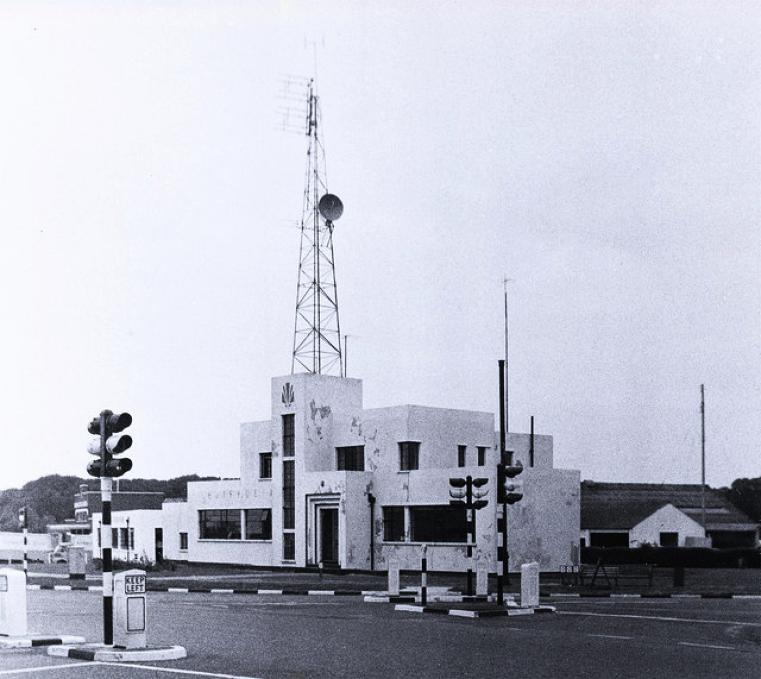 |
Relay House, Westwood - 1950's. |
|
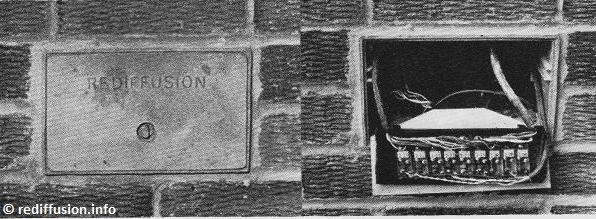 |
The "Soot Box" wiring as pioneered in the South East Region. |
|




